Triathlon at the Olympic Games: A History Lesson
17 August, 2016

This month, triathlon will make its fifth appearance in the Olympics. If you don't know the story of how a sport that found its feet in San Diego and Hawaii made it onto the world's stage, read on.
by Brad Culp
The origins of triathlon can be traced all the way back to France in the 1920s, when a number of races were held that involved various distances of swimming, biking and running (not necessarily in that order). But the roots of triathlon as we know it today trace back to San Diego in 1974, when the San Diego Track Club organized a race in Mission Bay that involved a 5.3-mile run, a 5-mile bike and a 600-yard swim. The following year the order was reversed to swim, bike, and run, and the event was moved to San Diego's Fiesta Island. For the first time the term "triathlon" was used to describe the race.
From San Diego to Hawaii
Taking part in those first two triathlons in San Diego were U.S. Navy Commander John Collins and his wife, Judy. A few years later, in 1977, John and Judy Collins found themselves in a debate at the award's ceremony for the Waikiki Swim Club over whether swimmers or runners were the fittest athletes on the planet. Collins brought up an article published in Sports Illustrated that had declared Belgian cyclist Eddie Merckx the most physically fit athlete in the world. To settle the debate over which athletes were indeed the fittest, Collins suggested that they combine O'ahu's three major endurance events (the 2.4-mile Waikiki Roughwater Swim, the 112-mile Around O’ahu Bike Race and the Honolulu Marathon). "Whoever finishes first, we’ll call him the Iron Man," he famously said.
The following February, 15 athletes took part in the first ever IRONMAN race, with Navy Communications Specialist Gordan Haller finishing first in 11:46:58. The event grew quickly, thanks in large part to an article published in Sports Illustrated about the 1979 event, which had 50 participants.
In 1981, Collins handed the reigns over to Valerie Silk, who decided to move the race to the much quieter Big Island in 1982—the only year that two installments of the race were held. It was during the February race in 1982 that triathlon had one of its defining moments when Julie Moss fell to the ground just a few meters from the finish line and was passed by Kathleen McCartney for the women’s title. Moss’ agonizing crawl to the finish was caught on camera for ABC's Wide World of Sports. More than 2,000 people applied to compete in the October event that same year, but Silk decided to cap the race at 1,000.
Les McDonald's pivotal role
1982 was a pivotal year for the sport and the year that set the foundation for triathlon's ultimate inclusion in the Olympic Programme. The media attention that came after the broadcast of Moss' crawl to the finish created a demand for new races, especially in North America. Race directors Jim Curl and Carl Thomas started the U.S. Triathlon Series (USTS) and decided on a distance of a 1.5K swim, 40K bike and 10K run for their series. That same year, Tri-Fed, the sport's first national governing body was set up in the United States (which would later become USA Triathlon). A year later and a little farther north, a British-Canadian IRONMAN athlete named Les McDonald organized the British Columbia Triathlon Federation, which would later grow to become Triathlon Canada. McDonald is perhaps the most important and controversial figure in the history of triathlon. The son of Scotch-Irish coal miners, McDonald was tenacious, fiery, outspoken and extremely hard working.
In 1983, a year before the 1984 Summer Games in Los Angeles, then-IOC President Juan Antonio Samaranch was doing a site visit when he saw a strange sport on TV. It was a broadcast of one of the first USTS events and Samaranch was mesmerized. This needed to be in the Olympics, he thought. He began researching the leaders and organizers within the triathlon community, and that led him to McDonald, who he immediately called in Vancouver.
"This is Juan Antonio Samaranch. Will you help me get triathlon into the Olympic Games?"
Without any idea of where to start, McDonald replied "yes" and triathlon was officially on the road to the Olympics. Swedish IOC Member Gunnar Erikson was appointed by Samaranch to assist McDonald, and he made it clear that the first step was the creation of an international governing body. Two attempts at creating an international governing body were already underway, however. The Triathlon Federation International (TFI) had been organized by Curl, Silk and a number of other U.S. race directors. Across the pond, the European Triathlon Union (ETU) was in its infancy under the leadership of Joop Van Zanten of Holland. The two groups held a few meetings over the next two years, and eventually the TFI was somewhat officially constituted in 1987, with Van Zanten elected as the first president. At subsequent meetings over the next two years, it became clear the European and American representatives had serious issues when it came to money and control, and McDonald was put in the role of being the arbitrator between the two sides.
That's when things got a little messy. The Europeans wanted the Hawaii IRONMAN to be recognized as the official world championship, and at first Silk was open to the idea. But after witnessing first-hand the issues between her fellow American representatives and their European counterparts, she decided not to affiliate her race with TFI and that led to a clear split between the ETU and those trying to organize the sport in North America.
After learning of the failures in the attempt to unify the sport, Samaranch came up with the idea of triathlon joining the International Modern Pentathlon Union (UIPM) to expedite its inclusion in the Games. A meeting was called between the nearly 30 countries with a national governing body for triathlon in 1988 and they provisionally agreed to join the UIPM. They also set the date for the first Olympic-distance Triathlon World Championship for the following year in Avignon, France.
McDonald's brief experience working with UIPM didn't go well, to say the least. After a handful of discussions, it became clear that partnering with UIPM meant triathlon would have no autonomy and McDonald and the rest of the stakeholders wouldn't have any control over the direction of their very new sport. McDonald was not someone who was willing to concede power to be bullied by a group with no vested interest in his sport.
From UIPM to ITU to the Olympic Games
The following spring, delegates from triathlon's 30 national governing bodies met in Avignon in an attempt to organize and decide whether or not joining the UIPM was the right move for triathlon's growth and eventual inclusion in the Olympic Games. After three days of often heated debates, the NGBs joined together to form the International Triathlon Union and decided to break ties with UIPM. McDonald was elected as the ITU's first president and it was decided that the ITU offices would be in Vancouver, where he had run Triathlon Canada along with longtime assistant Loreen Barnett (who would eventually become the ITU Secretary General).
Now that triathlon had a functioning international federation, it was time for McDonald, Erikson and Samaranch to work together to get triathlon into the Olympic Programme. McDonald was invited to come to the 1991 IOC Congress to begin lobbying IOC members and delegates from National Olympic Committees (NOCs) to recognize the ITU as an official International Federation (IF). He received the necessary support from 75 NOCs, as well as the blessing of FINA (swimming), UCI (cycling) and IAAF (athletics) to become an independent federation. Triathlon was now one of 15 IFs officially recognized by the IOC but not yet in the Olympic Programme. It took three more years of lobbying the IOC—most of which fell on the shoulders of McDonald—before triathlon was voted into the Olympic Games at the IOC Congress in Paris in 1994. Triathlon would make its Olympic debut at the 2000 Sydney Games, using a draft-legal format on the bike after it was determined that a non-draft race would make officiating impossible.
The women's triathlon was the opening event of the 2000 Sydney Games, with Switzerland's Brigitte McMahon edging out local favorite Michellie Jones for the sport's first gold medal in front of the world-famous Sydney Opera House. Five years later, after finishing tenth at the Athens Games, McMahon tested positive for EPO and subsequently retired from the sport but her gold medal was never rescinded. The day after the women's race, it was the men's turn to make their Olympic debut. Canadian Simon Whitfield won in a thrilling sprint finish over German Stephan Vuckovic. Eight years later, in Beijing, Whitfield would once again turn on the afterburners to take silver. Whitifield and Kiwi Bevan Docherty are the only two triathletes to have multiple Olympic medals.
Short course and long course success
A number the ITU's all-time greats have moved on from short-course racing to find success at long-course racing. The first to claim both an Olympic medal and an IRONMAN World Championship was Jones, who once famously told a reporter, "there is no way I'll ever race an IRONMAN." She retired from ITU racing in 2003 and went on to win the 2006 IRONMAN world title. More recently, both of last year's Kona champions had their skills honed on the ITU circuit. Jan Frodeno became the first to win both Olympic gold (2008) and a Kona crown with his win in Hawaii last year. Daniela Ryf didn't have quite as storied of short-course career (she finished seventh at the 2008 Beijing Olympics), but she was always known for her strength on the bike and has used that to make a seamless transition to IRONMAN racing as well.
Qualifying for the Olympic Games is as competitive as the race itself, with National Olympic Committees (NOCs) using different criteria to select their athletes. In Rio, a record 42 NOCs will be represented in triathlon, including six new nations (Jordan, Norway, Puerto Rico, Israel, Barbados and Azerbaijan). The Olympic qualifying period began two years ago at the ITU World Triathlon Yokohama and ended at this year's race in Yokohama. During that time, athletes score points for their federation and the highest-ranking countries receive the maximum of three men or women on the Olympic starting line. It's then up to the National Federations to choose their athletes. Many use a qualifying race or a series of qualifying races, while others use a selection by committee at the end of the qualification period. A total of 112 athletes (56 women/56 men) will compete in this year's Olympic Triathlon.
Triathlon will make its fifth appearance in the Olympics this August. Instead of kicking off the Games like it did in 2000, the triathlons will be two of the final events. The men's race will take place on August 18, with the women to follow on August 20.
Learn more about this year's events at rio2016.com



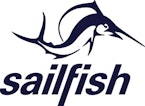



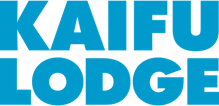
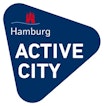
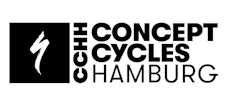

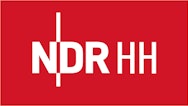

.png?h=106&auto=format)
